Table of Contents
Listen to this post as a podcast:
Sponsored by EVERFI and Today by Studyo
We are living in a time when a segment of the population is working as hard as it can to keep our students ignorant of history. Dozens of states are attempting to erase history from textbooks and curriculum if it paints certain populations in an unflattering light, and teachers’ jobs are under threat in many places if they teach certain concepts.
This is no accident. It’s happening at a time when more excellent work than ever before is being published to accurately and inclusively represent history. While history books written for schools have always been heavily edited, and for generations many of the most atrocious aspects of our history amounted to little more than a quick paragraph in most of them, other materials have come along that examine history through a more critical and inclusive lens.
And that stuff, thankfully, can be found on the internet, which is still available in all 50 states — for now, anyway. If you are a student or parent living in a place where history is under attack, and you want to give yourself or your child the education that your legislators are trying to take from you, the nine outstanding resources in this post are for you.
(By the way, every year I publish a digital book called The Teacher’s Guide to Tech, and in that guide we have an extensive section dedicated to history and social studies resources, along with tons of other resources. This is just a sampling of some of the most relevant items from that section.)
The Resources
Most of what I’m going to share here are websites that contain educational materials like readings, videos, images, primary sources, and lesson plans for teachers. Ideally, they would all offer materials that anyone could use to teach history to themselves, since the students I’m reaching out to here have teachers who literally aren’t allowed to use them, but with a little creativity, that self-teaching can still happen: Either you can just sort of imagine the parts where there’s supposed to be a class discussion about something, or ask yourself the questions that a teacher is being directed to ask. I’m also imagining other scenarios where a group of former teachers in Texas, for example, starts a kind of underground after-school program using these materials. Just throwing out ideas.
I do not have a history education background, so it’s likely I will neglect to mention some important aspects of the sites I’m sharing here. If I overlook any notable features, or if you know of other free history resources that are worth a look, please mention them in the comments.
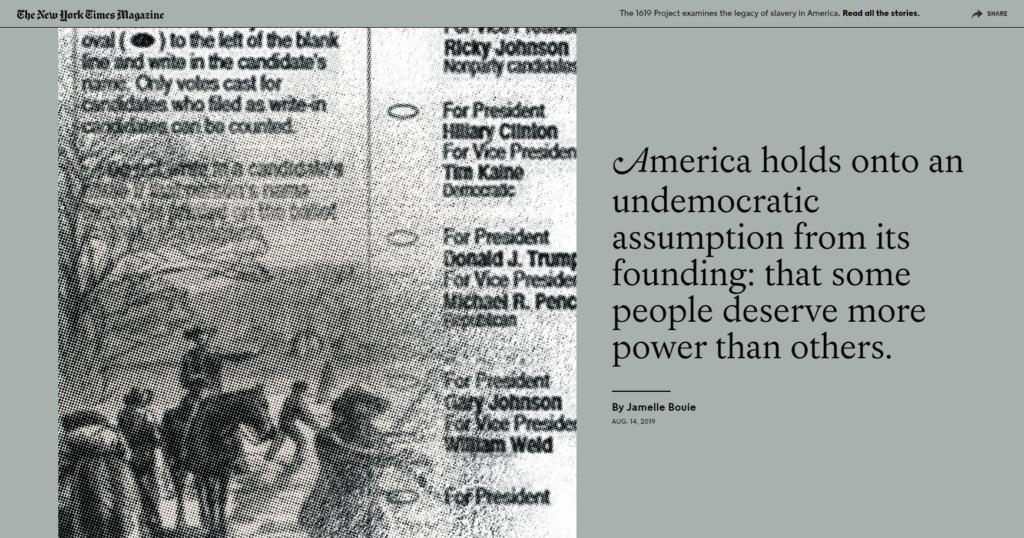
The 1619 Project
If any resource belongs at the top of a list like this one, it’s the 1619 Project. The project started in August 2019 by Nikole Hannah-Jones as a special issue of the New York Times Magazine, a collection of essays and other creative works that “illuminates the legacy of slavery in the contemporary United States, and highlights the contributions of Black Americans to every aspect of American society.” While the project was celebrated by many, it was also the target of criticism from conservatives, and this eventually grew into what we now know to be the anti-CRT movement, with some states specifically banning the use of this project.
Despite the pushback, the project has continued to expand: It now includes a podcast, a book-length anthology, a children’s book, and a curriculum.
Try a Sample: Use the Reading Guide to work your way through the essays and other creative works in the original full issue of the project as it appeared in the New York Times Magazine. Or use the listening guide to supplement your listening of the 1619 Podcast.
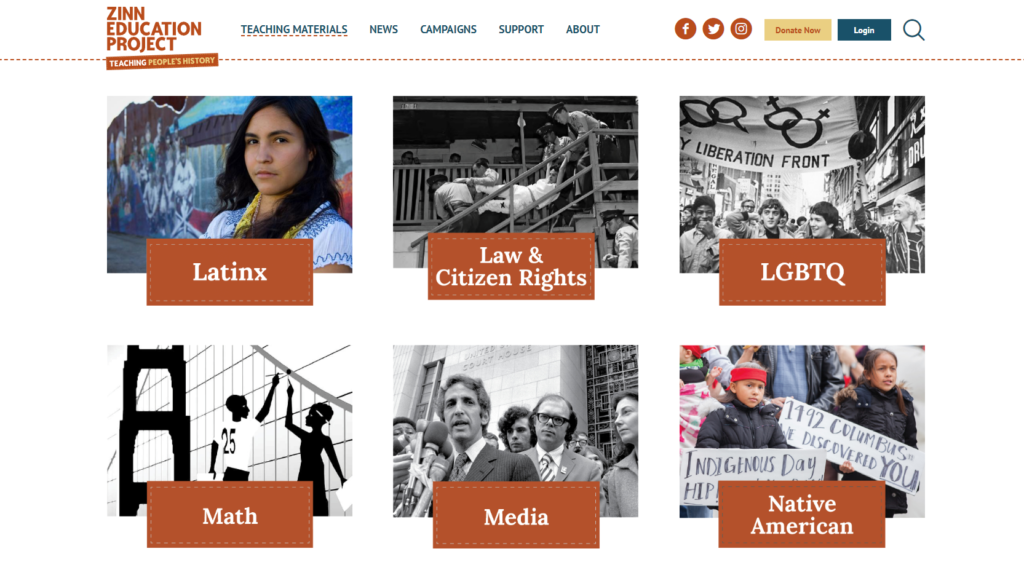
The Zinn Education Project
The materials on this site are built through the lens of history highlighted in Howard Zinn’s book A People’s History of the United States. Here’s how they explain their approach: “When we look at history from the standpoint of the workers and not just the owners, the soldiers and not just the generals, the invaded and not just the invaders, we can begin to see society more fully, more accurately. The more clearly we see the past, the more clearly we’ll see the present — and be equipped to improve it.”
The site offers free, downloadable teaching materials organized by theme, time period, and reading level. They also offer regular online trainings and institutes for teachers.
Try a Sample: Within the Labor theme, you can find activities like this lesson on how hospital workers organized in the late 1960’s, and links to primary documents like a worker-run newspaper published by women working in the textile industry in Lowell, Massachusetts in the mid-1800s.
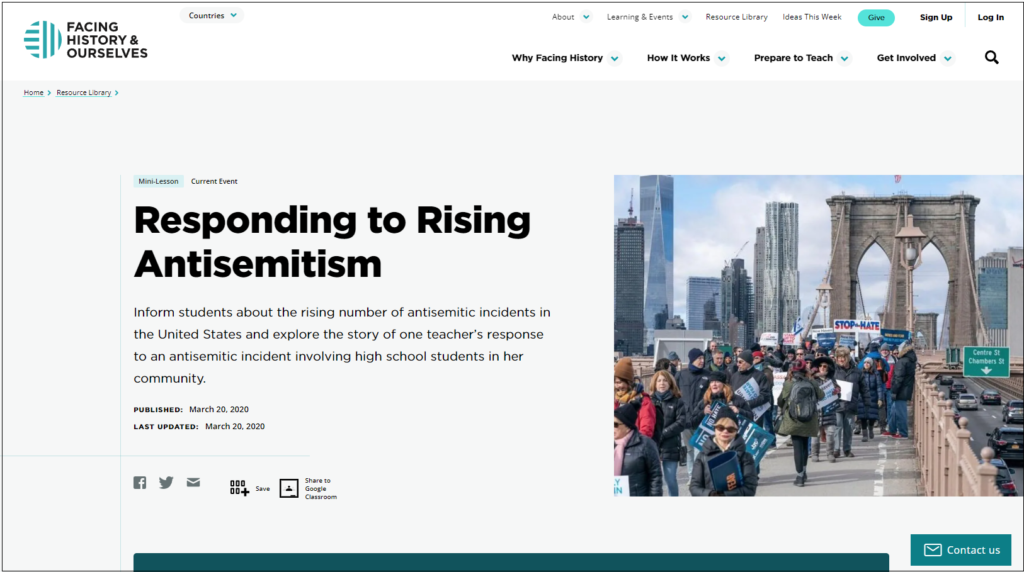
Facing History and Ourselves
The creators of Facing History want to go beyond exploring history and current events through a different lens: They also want to develop students’ ability to stand up to bigotry and hate as a result of what they learn. Their resource library offers a rich collection of free mini-lessons, readings, videos, activities, and other materials that anyone can use to teach themselves about topics like racism, genocide, migration and immigration, human and civil rights, and many other topics, and if you’re living in a place where these topics are being muted, this may be your only option. If you are a teacher working in a state with more freedom, you’ll be able to use their materials in your classroom and take advantage of Facing History’s many ongoing professional development opportunities for teachers who want to use their approach.
Try a Sample: This mini-lesson on the rise of antisemitism starts by having students do a gallery walk to explore recent incidents of antisemitism. It then moves to the story of a high school teacher who took action against antisemitism in her own school; students are then prompted to consider how her example might shape their own responses.
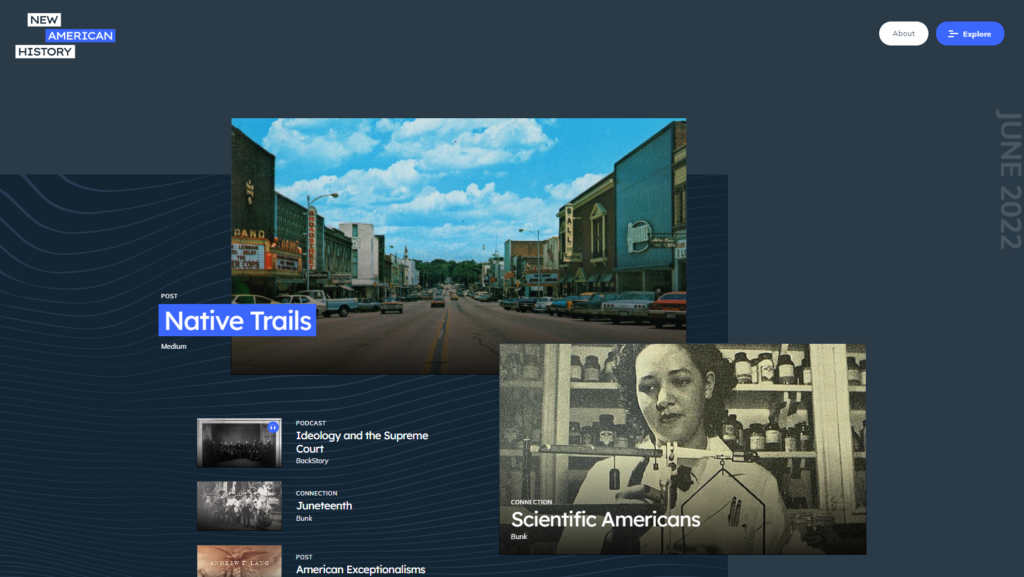
New American History
With a goal of uncovering the “untold stories and missing pieces of what we know or thought we already knew about the American past,” this site explores these histories through a fascinating combination of curated journalism, resources for teachers and students, and incredible data-rich interactive maps.
Try a Sample: Scroll through The Lasting Impact of the Trail of Tears, a multimedia lesson that explores how the Indian Removal Act and the Trail of Tears impacted Native Americans, or this lesson on Gerrymandering and Redistricting that includes interactive maps that include data from recent election years.
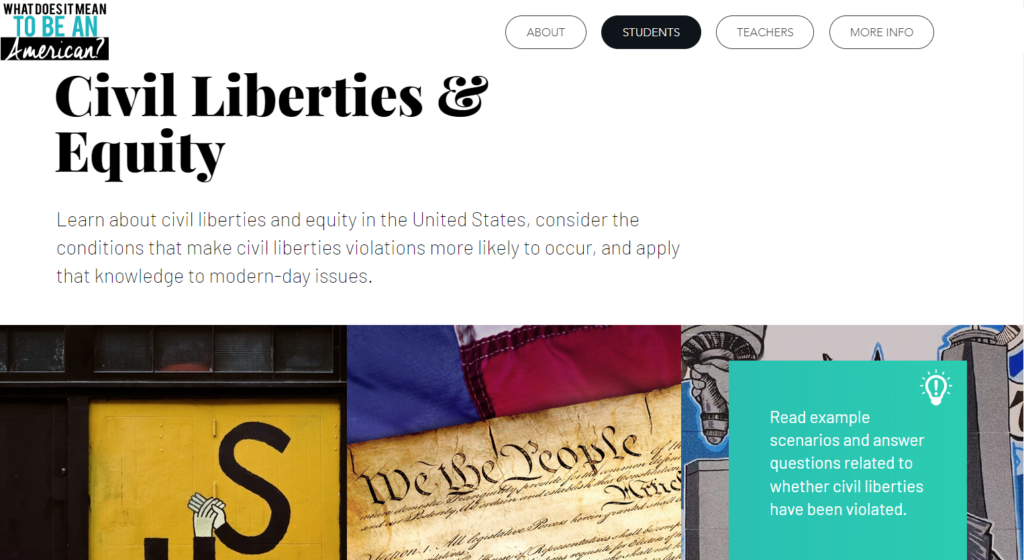
What Does it Mean to Be an American?
whatdoesitmeantobeanamerican.com
This site offers free in-depth lessons on six topics that explore the overarching question of what it means to be American, including immigration, civil liberties & equity, and civic engagement. The “lessons” are more like mini-units that would likely take several class periods to teach, and they include videos, readings, activities, and discussion topics.
Because the site was developed by the Mineta Legacy Project, which is dedicated to celebrating the life and contributions of Norman Mineta, the first Japanese American to be elected to Congress, the site contains quite a few resources focused on the lives of Japanese Americans.
Try a Sample: The Immigration lesson includes this reading on migration concepts which introduces readers to the reasons why people move from one country to another and defines key vocabulary terms, and this video, where students share their immigration stories.
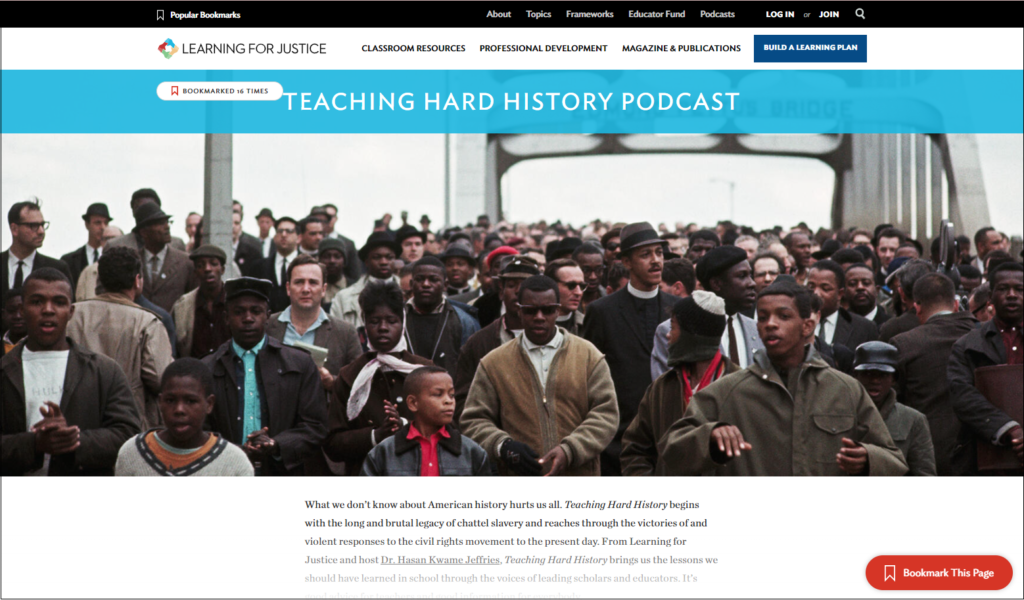
Teaching Hard History Podcast
learningforjustice.org/podcasts/teaching-hard-history
This podcast from the Learning for Justice website “brings us the lessons we should have learned in school through the voices of leading scholars and educators.” Dr. Hasan Kwame Jeffries — who I interviewed in 2018 (episode 98) when the podcast first started — is the host. In every episode, Jeffries draws insights from his own scholarship and shares the platform with many other historians to delve into a specific subtopic within a larger historical era. The first two seasons explore American Slavery, season three addresses the Civil Rights Movement, and season four examines the Jim Crow era. Although the podcast is directed at teachers and centers the conversation around classroom practice, it also offers enough fresh historical information to be a powerful learning vehicle for anyone.
Try a Sample: Listen to episode 6 of Season 3, The Jim Crow North, where Jeffries and historian Patrick Jones look into how the Civil Rights movement was not just happening in the southern states.
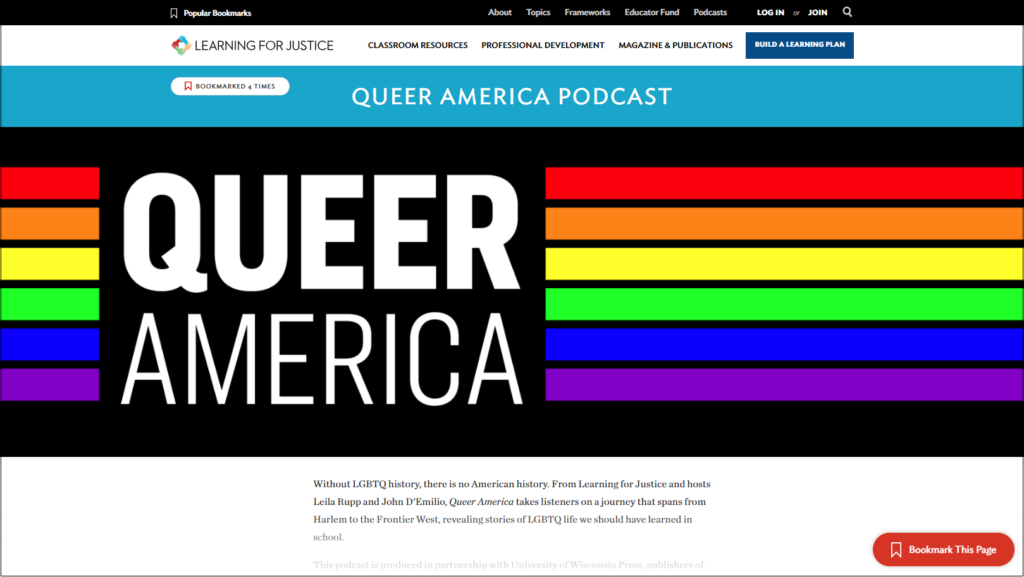
The Queer America Podcast
learningforjustice.org/podcasts/queer-america
Like Teaching Hard History, this podcast is also produced by Learning for Justice and its primary intention is to help teachers incorporate LGBTQ+ history into classroom curriculum. Sadly, this may take generations to achieve in some places, but the podcast is available to anyone anywhere who wants to teach themselves.
Try a Sample: Episode 6, The Lavender Scare, looks at the systemic firing of gay government employees that started in the 1950s on the premise that these employees were a threat to national security.
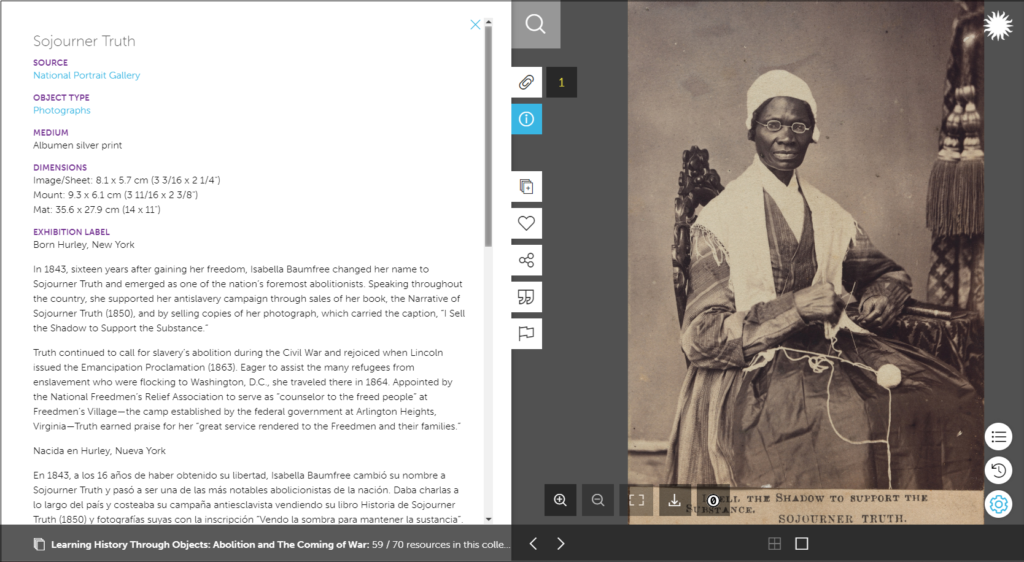
National Museum of African American History and Culture
nmaahc.si.edu/learn/digital-learning/north-star
Since the museum first opened in Washington, D.C. in 2016, its website has curated collections of digital resources through the Smithsonian Learning Lab platform. These collections thematically organize photos of objects, documents, imagery, and videos, helping visitors view history through the lens of the experience of Black Americans.
Try a Sample: Explore the Daily Acts of Resistance collection, which gathers items that illustrate how African Americans fought slavery and inequality in big ways and more subtle ways. “Using connections—family, neighbors, worship services, and formal political conventions—African Americans shared news, created networks, and developed strategies…(their) persistence and grassroots organizing still serve as a model for social activists today.”
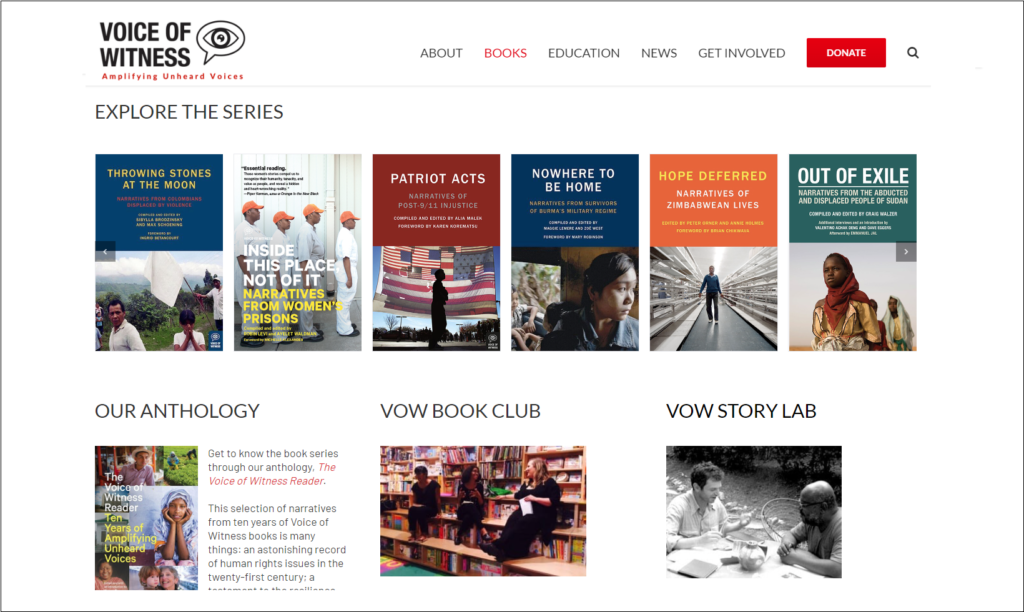
Voice of Witness
This incredible resource differs from the rest in that it is built around a series of published books, rather than free online resources, but the work is way too important to overlook. The mission of Voice of Witness is to amplify unheard voices, to tell first-person oral histories of people who are most deeply impacted by injustice but whose voices are usually never heard, such as wrongfully convicted Americans, undocumented immigrants, agricultural workers, Indigenous peoples, and communities displaced from public housing. To supplement the books, VoW offers an education program with free lesson plans, toolkits to empower students to create their own oral histories, and support for educators. To learn more about the organization, you can listen to an interview I did with their education director, Cliff Mayotte, in 2018.
Try a Sample: Mi María: Surviving the Storm, is a collection of stories from people affected by 2017’s Hurricane Maria in Puerto Rico. You can read a free excerpt here from Belle Marie Torres Velázquez, How Do You Deliver a Baby in the Middle of a Storm with One Generator, No Water, and No Electricity?
This collection is probably just a drop in a big bucket of excellent history resources that are out there just waiting to be discovered. If you know of other books, films, websites, and other resources that shine a light on all the parts of history that are currently being shoved under a rug, please share them in the comments. Thank you!
Join our mailing list and get weekly tips, tools, and inspiration that will make your teaching more effective and fun. You’ll get access to our members-only library of free downloads, including 20 Ways to Cut Your Grading Time in Half, the e-booklet that has helped thousands of teachers save time on grading. Over 50,000 teachers have already joined—come on in.

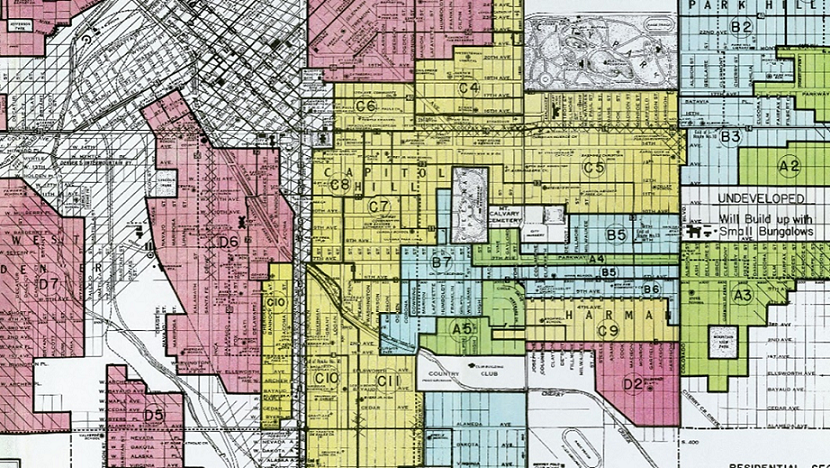


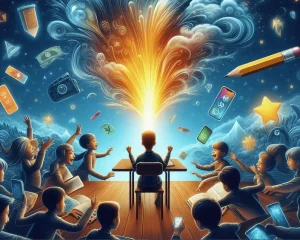

More Stories
Education for all: Is the world on track? Some personal reflections on the first EFA Global Monitoring Report, 20 years back
There’s Only One Thing Better Than Proctoring
Top 20 C# courses for a long-lasting future in programming